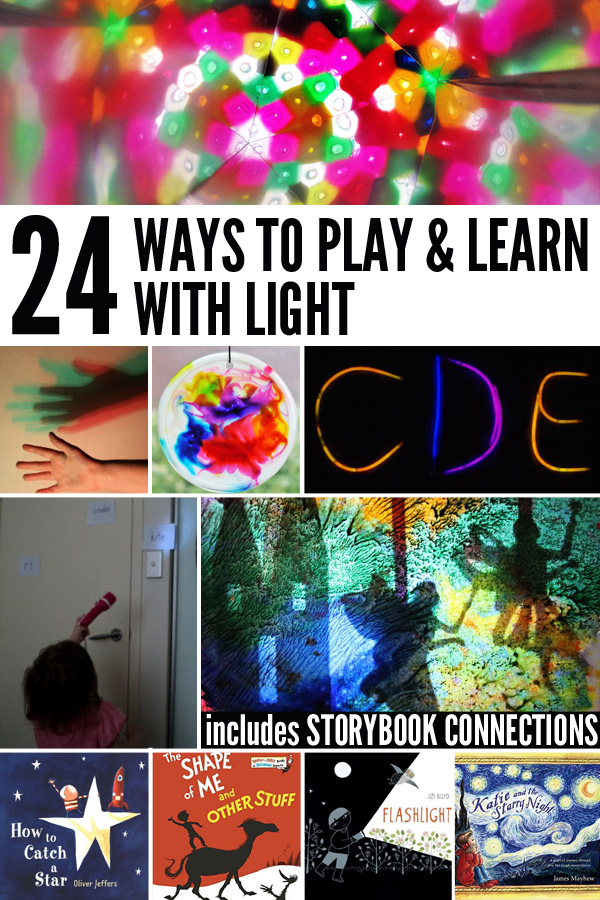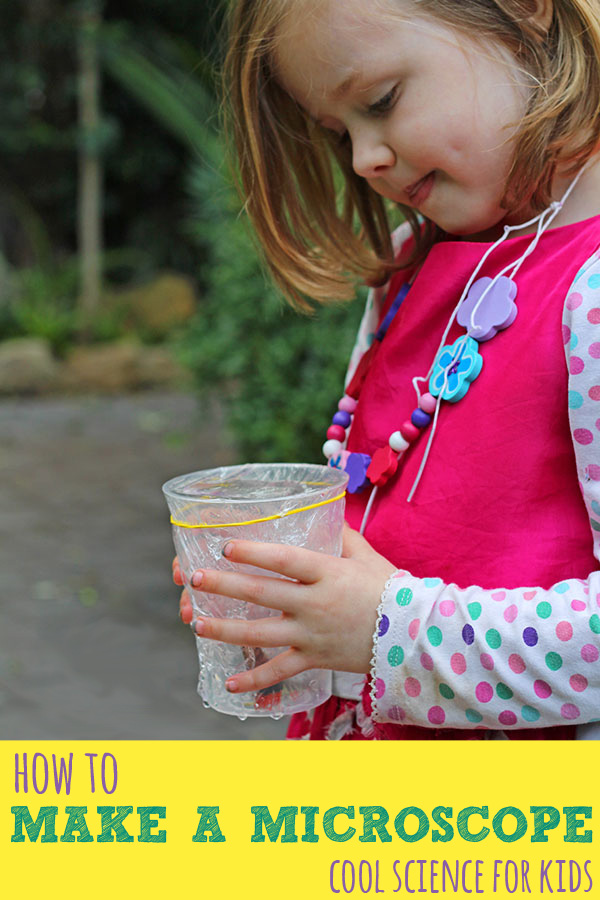Just in time dental health This month we explore this fun dental health science dental experiment using eggs, modulating the impact of different drink choices on your teeth and the importance of brushing.


This activity helps preschoolers explore some of the steps of the scientific method—observation, hypothesis, experiment, conclusion.
Encouraging children to look carefully and think about what they see develops powerful thinking skills that can be used in science, social studies, reading and math exploration.
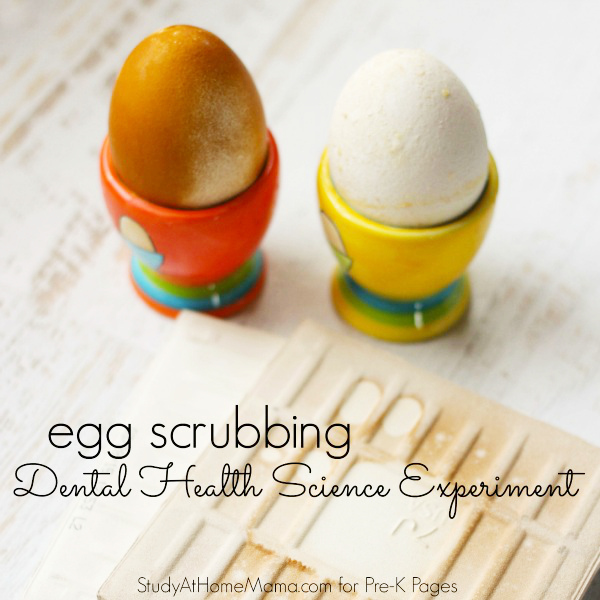

Materials needed for dental health experiments
- 1 cup soda or soft drink (brown soda, such as root beer or cola)
- 4 lipped containers or plates
- 1 cup vinegar
- 5 plastic cups or jars
- 1 cup juice (we used lemonade, but orange or apple juice would also work)
- 1 cup water
- 1-4 toothbrushes
- baking soda or toothpaste
- 4 boiled eggs and/or 4 tiles
- tissue
- 4 egg trays, optional
For the younger kids in our group, we used tile as an easier option. The tiles lay flat and are less likely to move when brushing, and the eggs have some extra side effects from the liquid that are fun for older kids to observe.
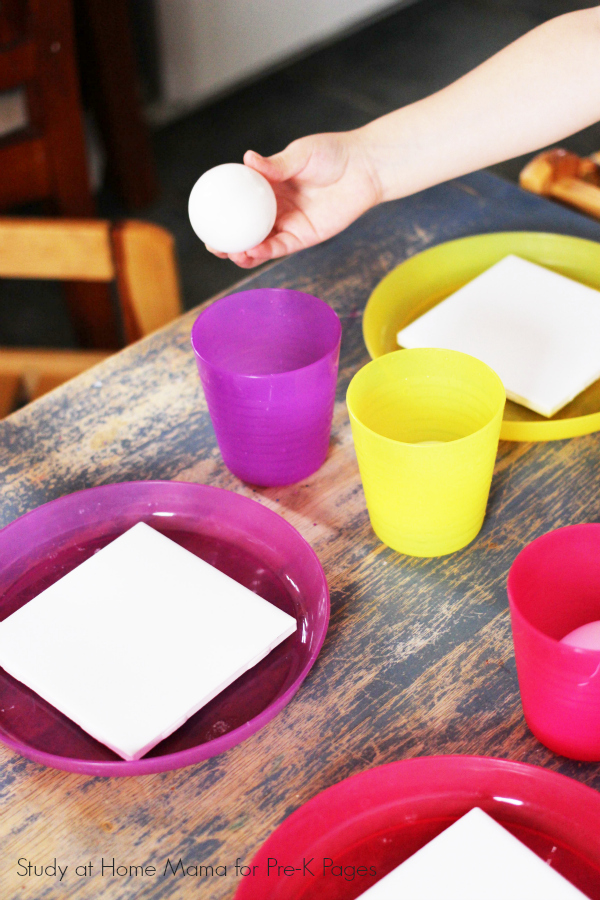

Start dental experiment
Start by placing the eggs in a plastic cup/jar and then the tiles in a plate/container.
Invite the children to pour the liquid over the eggs and tiles until they are completely covered. We matched the cups to the plates to make it easier to remember which liquid is in which container, but if you don’t have colorful containers for this activity, try adding matching stickers.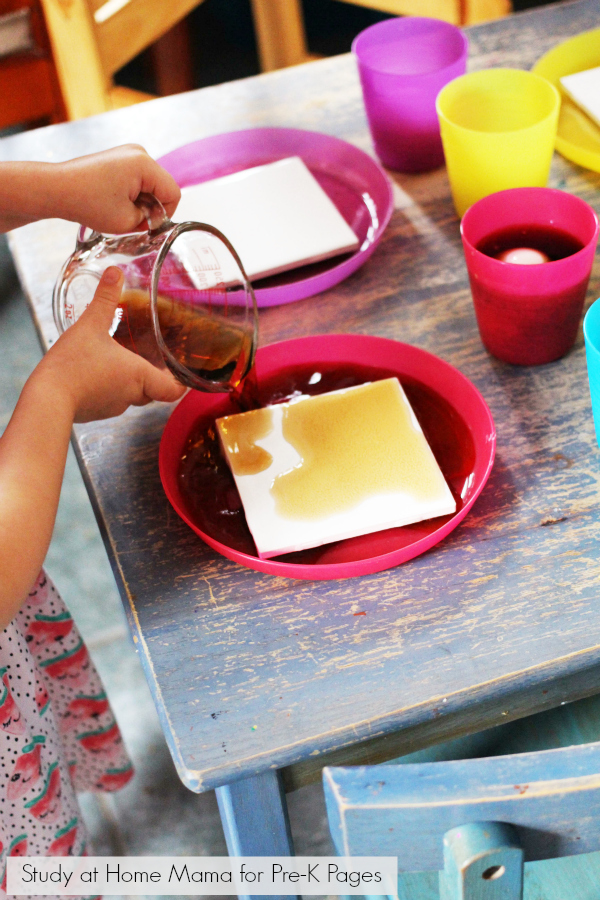

Make index cards or charts to show which liquids are in which containers.
encourage children predict (hypothesis) What happens when an egg is left in a liquid.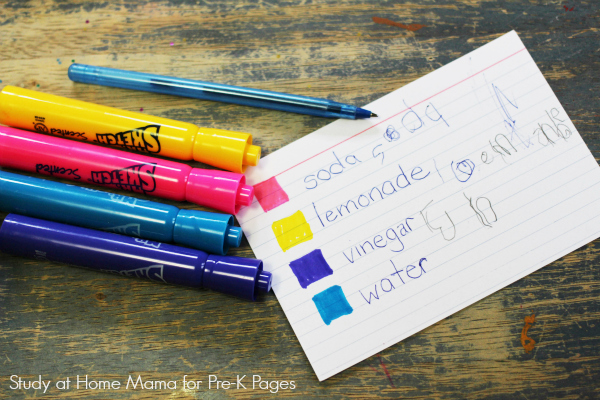

Allow plastic cups and plates to soak overnight. If you let them soak for too long, the eggshells may start to dissolve – which is a great experiment in itself, but not what we want to focus on.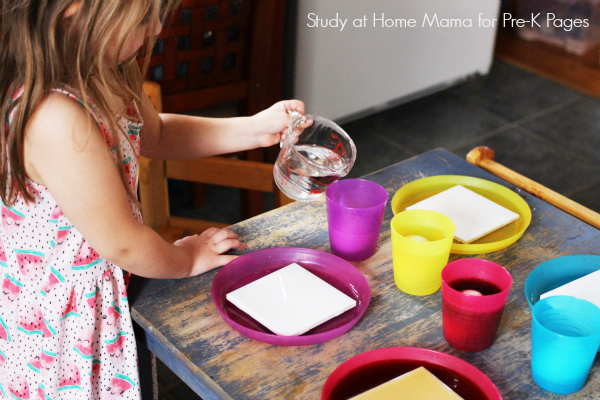

Observe and explore
The next day, carefully prepare your toothbrush, water, toothpaste, or baking soda. Coming from a Montessori background, I like to emphasize the importance of an organized work environment for children to really focus on what they are learning, rather than being distracted or frustrated by a chaotic work environment.
One at a time, remove one egg from the liquid and place it in the egg holder. Encourage children to use their senses to observe and discuss the effects of liquids on eggs and the color of the eggshells.


We noticed that the soft drinks had the most obvious effect on the eggs – completely changing the color of the shells!
The brown film is difficult to wipe off. We tried water at first and then had to add toothpaste to get it off.

The lemonade forms a tough coating on the eggs, almost bubbly on the surface. Even though the egg still looked white, when we painted it we noticed a lot of that nasty gray stuff coming off the brush.
I encourage children guess why (estimate) why these changes occurred.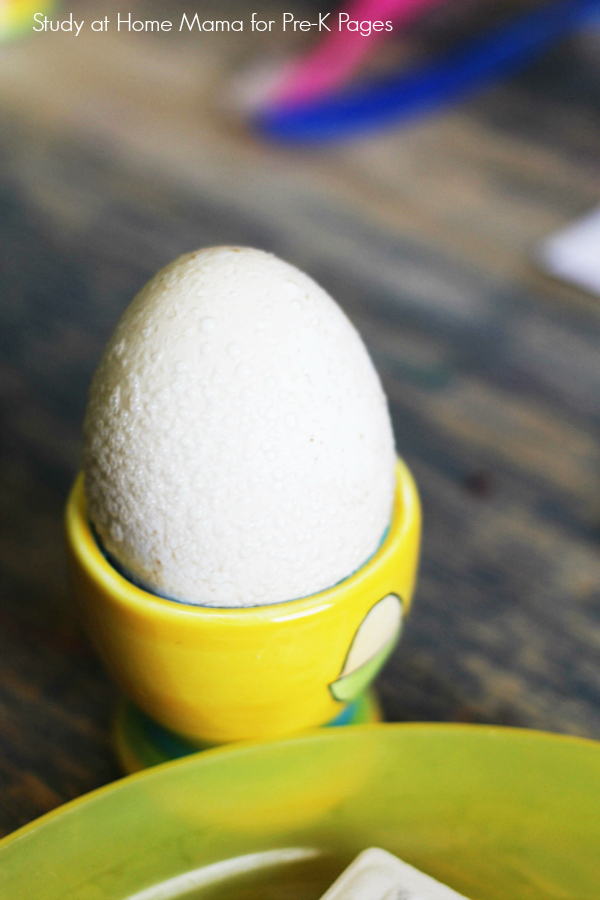

Vinegar eggs are probably the coolest of them all – vinegar makes the shells so soft and squishy!
We could actually crush the egg and see the marks left by our fingers without breaking the shell.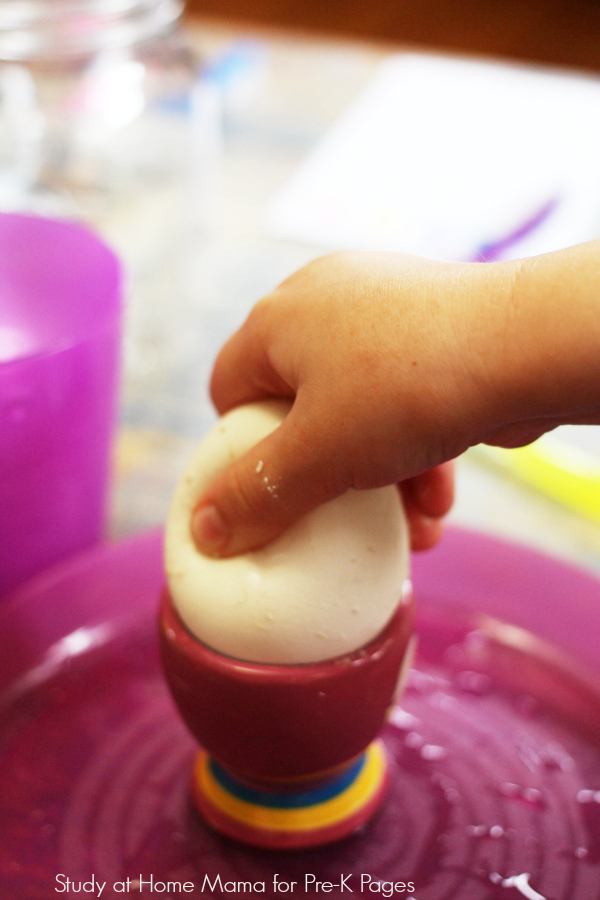

The watery egg was the only one that seemed unaffected, although it still smelled a little bit better after brushing it.
in conclusion
At the end of the experiment, it is a good idea to ask the child what they remembered and what they learned. Encourage them to connect the science experiment to their own lives—for example, asking which drinks might be better for their teeth and whether they need toothpaste to brush their teeth.
You may want to provide your children with paper and pencils or crayons to record their observations and conclusions. They can draw or print words to record what they observe.
This is a great dental health science experiment because it’s affordable, easy, and the kids understand what we’re trying to do—and take it to heart! Some kids even discussed the importance of brushing their teeth at home so this part of their daily routine becomes easier.
As a follow-up to this activity, one of these dental health math activities or dental health literacy activities would be perfect for your dental health themed month!
Introduction: Jennifer Tammy writes at Study at Home Mama, sharing hands-on learning activities, easy recipes, and parenting inspiration. She is a single mother, a trained psychologist, and a certified Montessori kindergarten owner. You can connect with her on Facebook, Pinterest or Instagram.
More scientific ideas

